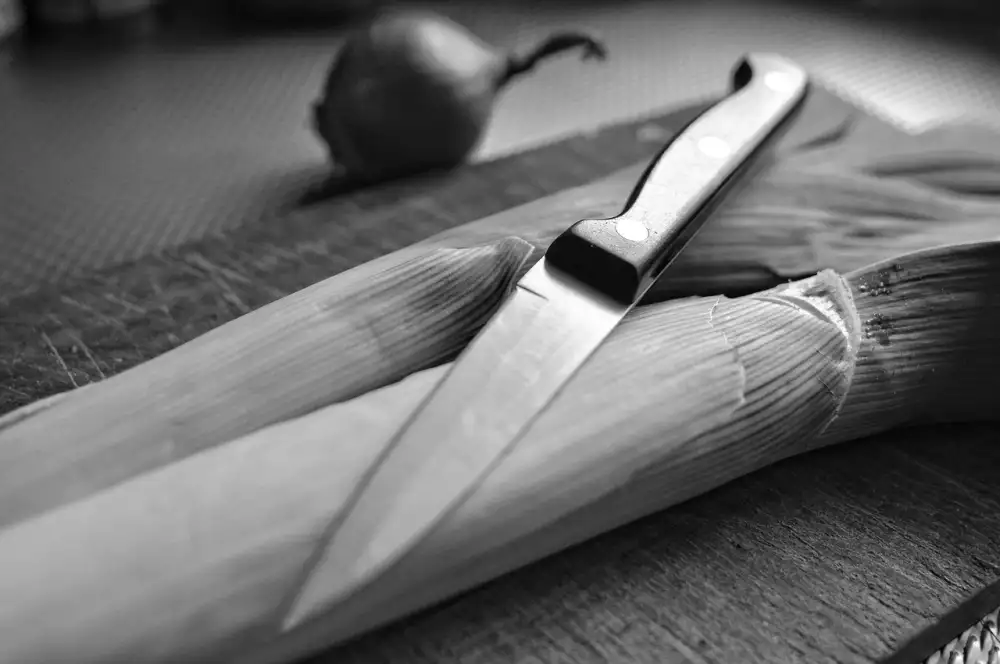Master the Art of Seasoning Your Cast Iron Skillet: A Step-by-Step Guide

- Introduction to Seasoning a Cast Iron Skillet
- Benefits of Seasoning a Cast Iron Skillet
- Step-by-Step Guide to Seasoning a Cast Iron Skillet
- Preparing the Skillet
- Applying the Oil
- Heating the Skillet
- Cooling and Storing the Skillet
- Tips for Maintaining a Seasoned Cast Iron Skillet
- Frequently Asked Questions about Seasoning Cast Iron Skillets
- Conclusion: Enjoy the Benefits of a Well-Seasoned Cast Iron Skillet
Introduction to Seasoning a Cast Iron Skillet
Seasoning a cast iron skillet is an essential skill for any aspiring chef or home cook. This process involves treating the surface of the skillet with oil, creating a natural non-stick coating that enhances its cooking performance and prolongs its lifespan. Whether you're searing steaks, frying eggs, or baking cornbread, a well-seasoned cast iron skillet can elevate your culinary creations to new heights. In this step-by-step guide, we will explore the benefits of seasoning your cast iron skillet and provide you with valuable tips on how to master this art. So let's dive in and unlock the secrets of seasoning your cast iron skillet!
Benefits of Seasoning a Cast Iron Skillet
Seasoning a cast iron skillet offers numerous benefits. Firstly, it creates a natural non-stick surface, making cooking and cleaning easier. This means you can use less oil or butter when cooking, resulting in healthier meals. Additionally, a well-seasoned skillet distributes heat evenly, ensuring that your food cooks uniformly. The seasoning also helps to prevent rust and corrosion, prolonging the lifespan of your skillet. Lastly, a seasoned cast iron skillet imparts a unique flavor to your dishes, adding depth and richness to your culinary creations.
Step-by-Step Guide to Seasoning a Cast Iron Skillet
Step-by-Step Guide to Seasoning a Cast Iron Skillet:
1. Preparing the Skillet: Start by washing your new skillet with warm water and mild soap. Scrub off any residue or rust using a scrub brush or sponge. Rinse thoroughly and dry completely.
2. Applying the Oil: Pour a small amount of vegetable oil or melted shortening onto a paper towel or cloth. Rub the oil all over the skillet, including the inside, outside, and handle. Make sure to coat every surface evenly.
3. Heating the Skillet: Place the oiled skillet upside down in an oven preheated to 350°F (175°C). This allows any excess oil to drip off and prevents pooling. Bake for one hour to allow the oil to bond with the iron.
4. Cooling and Storing the Skillet: Turn off the oven and let the skillet cool completely inside before removing it. Once cooled, wipe away any excess oil with a clean cloth or paper towel. Store your seasoned skillet in a dry place to prevent moisture buildup.
Remember, seasoning is an ongoing process that improves over time with regular use and proper care. With each use, your cast iron skillet will become more non-stick and develop a beautiful patina that enhances flavor and cooking performance.
Preparing the Skillet
Preparing the Skillet:
Before you begin the seasoning process, it's important to properly prepare your cast iron skillet. Start by washing it with warm water and mild dish soap to remove any dirt or debris. Use a sponge or brush to scrub away any stubborn residue.
Once clean, rinse the skillet thoroughly and dry it completely using a towel or by placing it on a low heat burner for a few minutes. Make sure there is no moisture left on the surface as this can lead to rusting.
Next, inspect the skillet for any signs of rust or damage. If you notice any rust spots, use steel wool or a scrub brush to gently remove them. If there are any rough patches or uneven surfaces, you can also use sandpaper to smooth them out.
After preparing the skillet, it's ready for the seasoning process. Seasoning not only adds flavor to your dishes but also creates a non-stick surface that improves with time and use. So let's move on to the next step in our guide: applying the oil.
Applying the Oil
Applying the Oil:
Once your cast iron skillet is clean and dry, it's time to apply a thin layer of oil to the surface. This step is crucial as it helps create a protective barrier and prevents food from sticking to the skillet.
Choose an oil with a high smoke point such as vegetable oil, canola oil, or flaxseed oil. Avoid using olive oil as it has a lower smoke point and may leave a sticky residue.
Using a paper towel or cloth, pour a small amount of oil onto it. Rub the oil all over the inside and outside of the skillet, including the handle. Make sure to cover every inch of the surface evenly.
Be careful not to use too much oil as it can result in a sticky or gummy residue on your skillet. The goal is to have a thin, even layer that will polymerize during the seasoning process.
Remember that seasoning is not a one-time process; it's something you'll need to do regularly to maintain your skillet's non-stick properties. So don't worry if your first coat isn't perfect – you'll have plenty of opportunities to improve with each use.
Now that your cast iron skillet is properly oiled, it's time for the next step: heating it up!
Heating the Skillet
Heating the Skillet:
Once you have applied the oil to your cast iron skillet, it's time to heat it. This step is crucial as it helps the oil bond with the skillet's surface, creating a non-stick coating.
Place the skillet on a stovetop burner set to medium-high heat. Allow it to heat for about 5-10 minutes, or until you start seeing wisps of smoke coming from the skillet. This indicates that the oil is reaching its smoking point and is bonding with the skillet.
During this process, make sure to open windows or turn on ventilation as there may be some smoke produced. It's also advisable to use oven mitts or handle covers when handling the hot skillet.
Once heated, carefully remove the skillet from the heat source using oven mitts or handle covers. Allow it to cool down naturally for at least 1 hour before using or storing it. This cooling period allows for proper seasoning and ensures that the oil has fully bonded with the skillet's surface.
Remember not to rush this step by submerging your hot skillet in cold water or placing it under running water. Rapid temperature changes can cause thermal shock and damage your seasoned coating.
By following these steps, you'll achieve a beautifully seasoned cast iron skillet that will enhance your cooking experience and produce delicious meals every time.
Cooling and Storing the Skillet
Once you have finished heating the skillet, it is important to allow it to cool completely before storing it. This will prevent any moisture from accumulating and causing rust.
To cool the skillet, simply remove it from the heat source and place it on a heat-resistant surface. Avoid placing it directly on countertops or other surfaces that could be damaged by the hot skillet.
Allow the skillet to cool naturally for at least 1-2 hours. Do not rush the cooling process by submerging it in water or using cold water, as this can cause thermal shock and damage the seasoning.
Once the skillet is completely cooled, you can store it in a dry place. It is best to avoid stacking other cookware on top of the seasoned skillet, as this can potentially scratch or damage the seasoning.
Some people prefer to store their cast iron skillets with a light coating of oil to further protect them from moisture and rust. If you choose to do this, make sure to use a very thin layer of oil and wipe off any excess before storing.
By properly cooling and storing your seasoned cast iron skillet, you will ensure its longevity and continue to enjoy its non-stick properties for years to come.
Tips for Maintaining a Seasoned Cast Iron Skillet
To maintain a seasoned cast iron skillet, follow these tips:
1. Avoid using soap: After cooking, simply wipe the skillet with a paper towel or rinse it with hot water. Using soap can strip away the seasoning.
2. Dry thoroughly: To prevent rusting, make sure to dry the skillet completely after washing. Place it on low heat for a few minutes to evaporate any remaining moisture.
3. Apply a thin layer of oil: After each use, apply a thin layer of oil to the skillet's surface. This helps to maintain and enhance the seasoning.
4. Store properly: Store your cast iron skillet in a dry place to prevent moisture from causing rust. If stacking multiple skillets, place a paper towel between them to absorb any excess moisture.
5. Avoid acidic foods: Acidic foods like tomatoes and citrus can break down the seasoning over time. Limit their use in your cast iron skillet or cook them in another type of cookware.
By following these maintenance tips, you can ensure that your seasoned cast iron skillet remains in great condition for years to come.
Frequently Asked Questions about Seasoning Cast Iron Skillets
Frequently Asked Questions about Seasoning Cast Iron Skillets:
1. How often should I season my cast iron skillet?
It is recommended to season your cast iron skillet every few months or as needed. If you notice the seasoning wearing off or food sticking to the surface, it's time for a re-seasoning.
2. Can I use any type of oil for seasoning?
Yes, you can use various types of oils such as vegetable oil, canola oil, or even flaxseed oil. The key is to choose an oil with a high smoke point to prevent it from breaking down during the seasoning process.
3. Do I need to season a new cast iron skillet?
Most new cast iron skillets come pre-seasoned, but it's still a good idea to give them an additional seasoning before using them for the first time. This will help enhance the non-stick properties and build up a stronger protective layer.
4. Can I use soap and water to clean my seasoned skillet?
It's best to avoid using soap as it can strip away the seasoning. Instead, use hot water and a brush or sponge to gently scrub off any residue. Dry thoroughly and apply a thin layer of oil before storing.
5. What if my skillet starts rusting after seasoning?
Rust can occur if the skillet is not properly dried after cleaning or if it's exposed to moisture for extended periods. In such cases, scrub off the rust with steel wool, re-season the skillet, and ensure it is thoroughly dried after each use.
Remember, proper care and maintenance will keep your cast iron skillet in excellent condition and ensure its longevity in providing delicious meals for years to come!
Conclusion: Enjoy the Benefits of a Well-Seasoned Cast Iron Skillet
In conclusion, mastering the art of seasoning your cast iron skillet is essential for any aspiring chef. By following the step-by-step guide and maintaining your seasoned skillet properly, you can enjoy a range of benefits. A well-seasoned cast iron skillet provides excellent heat retention and distribution, making it perfect for searing, frying, and baking. It also creates a natural non-stick surface that improves with each use. With proper care, your seasoned cast iron skillet will become a cherished kitchen tool that lasts for generations. So go ahead, season your skillet and unlock a world of delicious possibilities in your cooking!
Published: 16. 11. 2023
Category: Food



